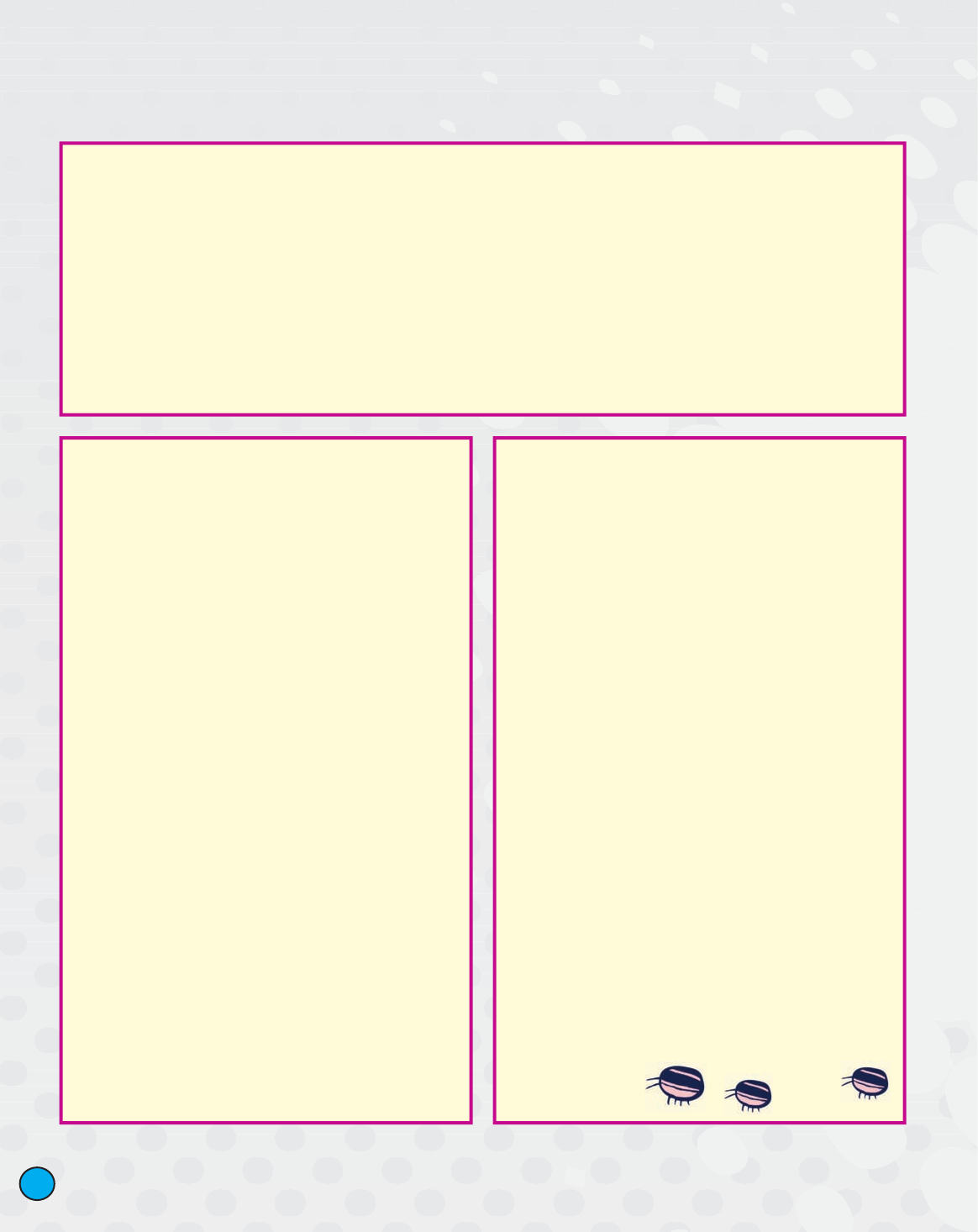
Job:05-19413 Title:Creating Comics
#175 P DTP:204 Page:170
(RAY)
120-176_19413.indd 170
5/26/10 9:05:4 AM
(Text)
each page. The grid is pleasing to the eye, but also knowing
exactly how much space I have to work with enables me
to edit dialogue and action down to the essentials. For the
Casual Poet, I use twelve panels. When writing a piece,
I tend to start with dialogue—I put the characters in the
situation and see what happens, then whittle away until it
fits into the prescribed spaces. Occasionally, I thumbnail
the entire page beforehand, but it seems most of the time I
prefer to just dive right in with the pencils.
The first thing I always do is rule out the panel borders.
This gives me a sense of accomplishment, even if I am
unable to complete the page on that day. Next, I pencil
in where the lettering will go, and usually cut out a lot of
speech at this stage to make it flow better. Using the grid
also helps me perfect the timing from panel to panel.
Then comes penciling, which is usually fairly close to
what the final page looks like. I go back and ink all the
lettering at once, making any final edits, then ink the rest of
the page. Once it is scanned in for coloring, I can also use
Photoshop to erase stray marks and clean up spots I don’t
like. From time to time I will use the computer to rearrange
a word balloon, like I did on the Rimbaud page seen here. I
did not like the original placement of the title letters, which
had them going straight across, so I made them curve
along the slope of the hill in the first panel.
Title: Casual Poet - Rimbaud
Client: Personal Diary Project
Media: Ink and Photoshop
Creative Process
I keep multiple sketchbooks, and try to have one on me at
all times. I am constantly looking and listening for words,
phrases, or objects that jump-start a thought process,
which could lead to a comic book page or story or song.
I read a lot—usually a work of fiction and a biography
simultaneously. Lately I have been reading journals of
authors or artists I admire. These have been great sources
of inspiration. When it comes time to draw, I try to work
fast, attempting to trap some of the magic found in
spontaneous sketching in the final piece. Usually, I work
on multiple projects at the same time, hopping back and
forth from one to the other. I no longer have studio space
in my house, so most of my drawing gets accomplished at
various coffeeshops in the area.
Like every other artist, I am generally dissatisfied with
what I create upon completion. Just the same, I hope that
each work manages to reach the reader and make him or
her think or feel something new, or see the world slightly
differently. When creating a comic strip, I seek to learn
something about myself I did not know.
As far as tools go, I ink my panel borders with a simple
Sharpie marker and most everything else with Faber-
Castell Pitt artist brush pens. My sketchbook pages are
usually drawn with a Marvy Le Pen. If I am working on a
large page I will generally use Strathmore Bristol board,
although smaller pieces are often drawn on regular printer
paper. If the page is to be printed in color, I will scan it in
and color it on my computer using Photoshop.
Often, I find that placing constraints on myself aids in
focusing the work. I like to use a set number of panels on
T
odd Webb likes monsters, the sunshine, and
breathing air. Over the past decade he has had
work featured in publications for JCPenney,
Focus on the Family, United Way, on the popular music
blog Daytrotter, and was a regular contributor to Nick-
elodeon Magazine. He is the creator of the books The
Goldfish and Bob, Valentine: A Cautionary Tale, and
Tuesday Moon. His cartoon journal, Casual Poet, has
evolved from a daily drawing experiment into an
ongoing rumination on the joys of living, and he is knee-
deep in the aptly titled long-form comic strip Reading
War & Peace, in which he chronicles his life while
reading War and Peace. Webb also performs music as
both Seamonster and Fox Hands, and most recently
has joined forces with Apples in Stereo front man Robert
Schneider to create Robbert Bobbert and the Bubble
Machine, a record/comic book combo for children.
Todd Webb
170
Creating Comics
Job:05-19413 Title:Creating Comics
#175 P DTP:204 Page:170
(RAY)
120-176_19413.indd 170 5/26/10 8:56:47 AM
Get Creating Comics! now with the O’Reilly learning platform.
O’Reilly members experience books, live events, courses curated by job role, and more from O’Reilly and nearly 200 top publishers.

